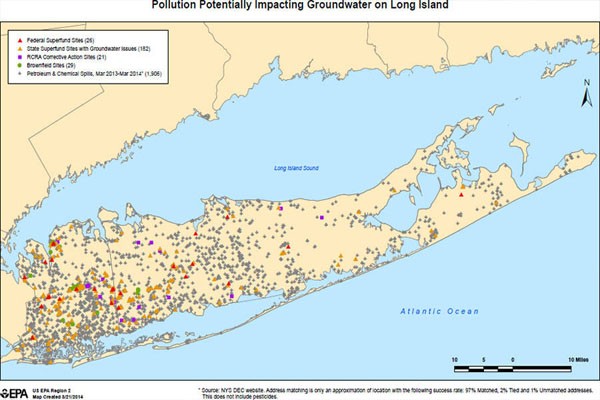Long Island Drinking Water and Contaminants

By: Andrew Zhang Take a sip and think. Where does your drinking water come from? Water from every tap, fixture, and faucet on Long Island is pumped up from underground aquifers despite being surrounded by water. The very lifeforce of Long Island is contained within these underground reservoirs, but very few people actually know how these function or how they are affected by industry. National Geographic defines an aquifer as “a body of rock/ sediment that holds groundwater,” and Groundwater is defined as “precipitation that has infiltrated the soil beyond the surface and collected in empty spaces underground.” The Long Island aquifer is an unconfined aquifer, which lies beneath a layer of permeable soil, compared to a confined aquifer with a layer of consolidated rock above. The three principal Long Island aquifers, the Upper Glacial aquifer, the Magothy aquifer, and the Lloyd aquifer, are composed of layers of sand and gravel deposited by glacial movement some 10,000 years ago. Th...
